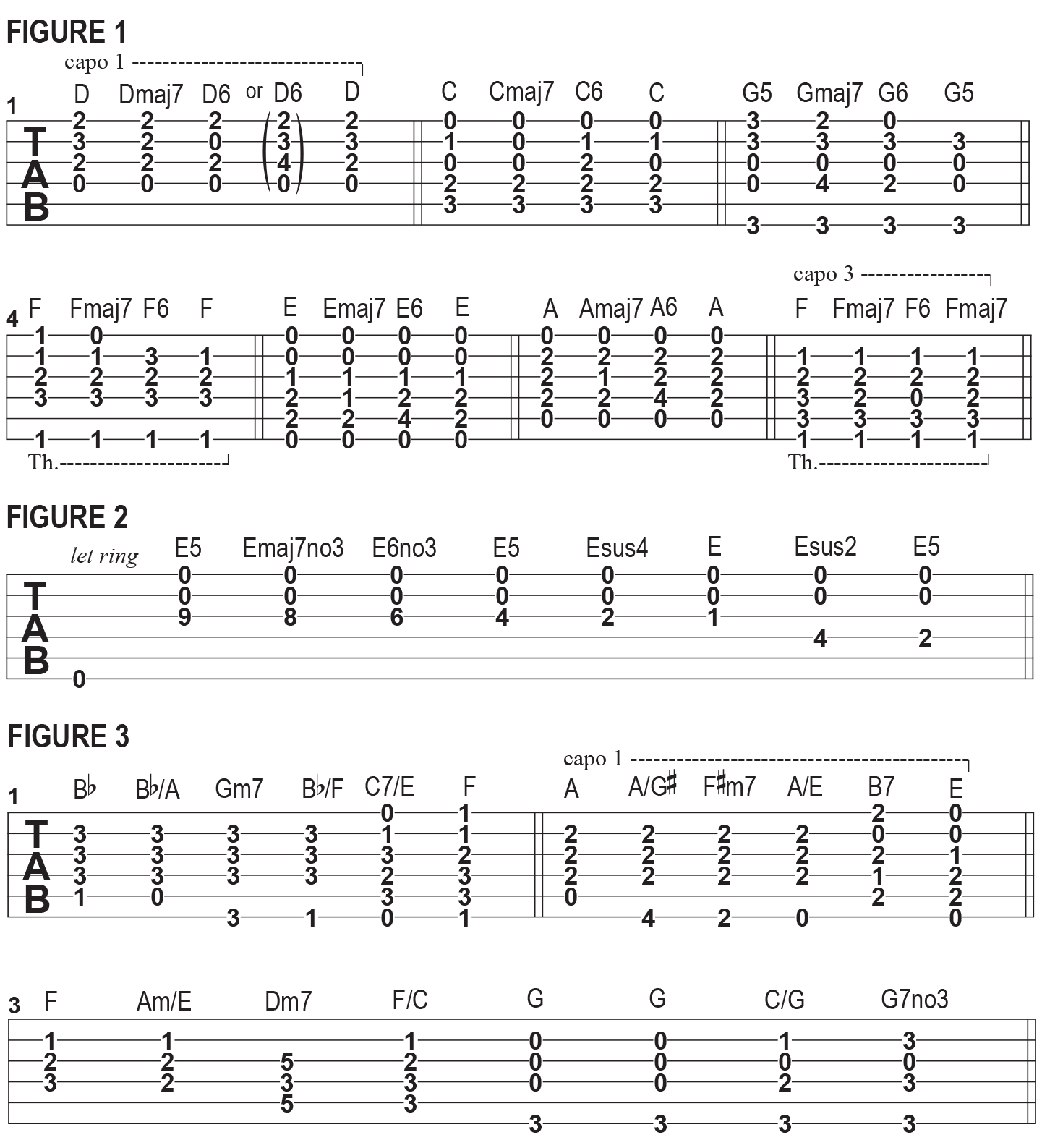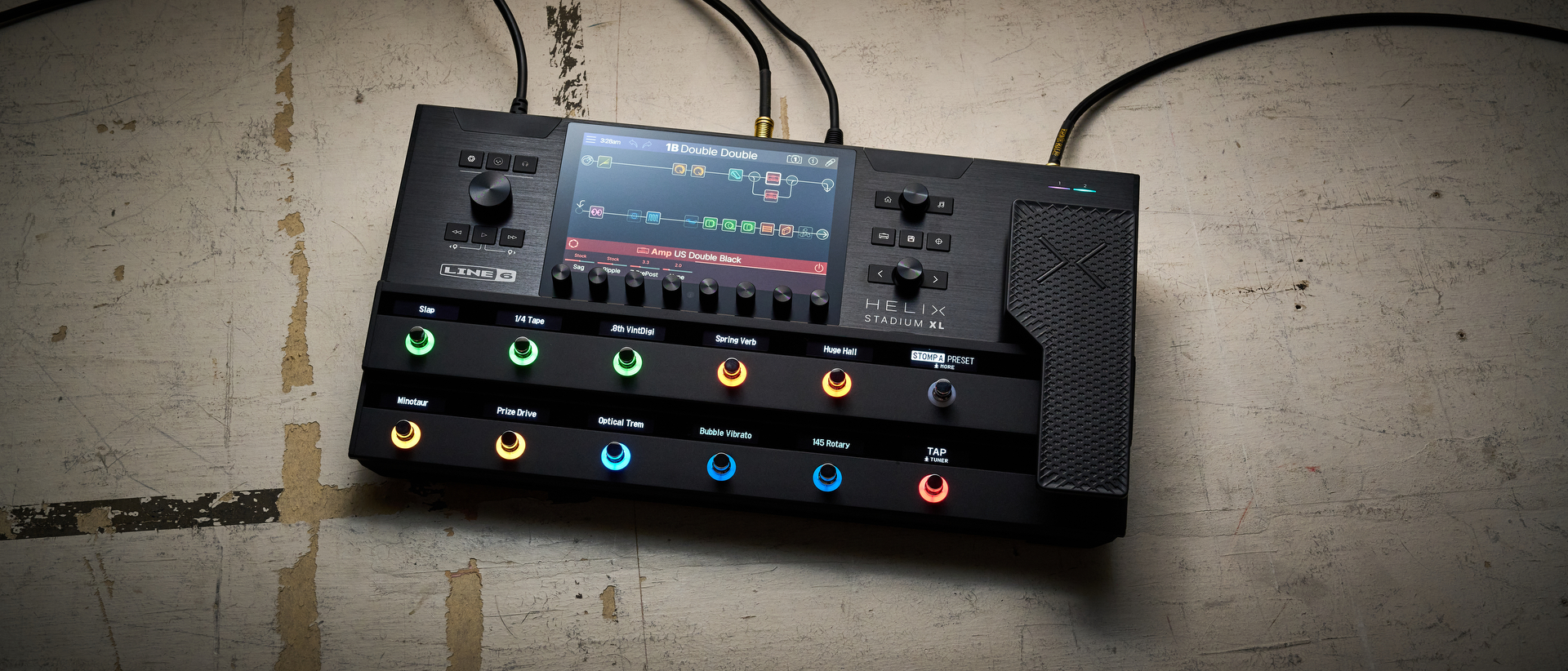Meet the Major Diatonic Drop, a Progression Used by Ozzy Osbourne, Glen Campbell and John Lennon
Learn about the major diatonic drop, and how you can use it to great effect in your own songwriting.
In the last installment of String Theory, we looked at brief sections of well-known songs that include a three-chord progression that I referred to as the “major chromatic drop,” wherein the root of a major chord descends to the major seventh, then to the minor, or “flatted,” seventh, followed by a resolution to a different chord (as happens with the standard minor drop progression that we explored previously).
Classic examples of this move include the opening to Led Zeppelin’s “The Rain Song” and the first three chords of each verse in ”Something” by the Beatles. I’d now like to cite a few examples of other familiar, appealing chord progressions, which feature a similar kind of descending movement known as diatonic motion, through the major scale, as opposed to chromatic motion. It’s a somewhat tamer sound, harmonically, but pleasing to the ear nonetheless, and another workable songwriting device to consider using.
A good, simple example of what I’m talking about here is the verse section of Glen Campbell’s arrangement of “Gentle On My Mind,” which he performed with a capo at the first fret. The guitarist begins on an open D chord then weaves an internal descending line into the voicing that walks halfway down the D major scale (D E F# G A B C#), from the root to the seventh, the sixth, and then the fifth—D Dmaj7 D6 D. A similar move can be found in “She’s Always a Woman” by Billy Joel, which is in the key of Eb.
During the second phrase of each verse, the pianist begins on the IV chord, Ab, then plays Abmaj7, then Ab6, then changes direction and goes back to Abmaj7. This chord sequence may be performed conveniently and gracefully on guitar using a capo at the third fret, as if it were in the key of F. FIGURE 1 illustrates some nice ways to play all of the above-mentioned chord changes in a variety of guitar-friendly keys, using open chords or first-position grips. As you play through each set of chords, try rearranging their order. You may very well come up with a verse accompaniment for an original song!

The intro and verses to Ozzy Osbourne’s “Mama, I’m Coming Home” feature guitarist Zakk Wylde performing a diatonic major drop on acoustic guitar (doubled by a 12-string) in the key of E, tuned down a half step, so that it sounds in Eb. Beautifully and conveniently incorporating the open B, high E and low E strings as ringing pedal tones within a flatpicked arpeggiation pattern, Wylde proceeds to walk down the E major scale (E F# G# A B C# D#), mostly on the G string, and the result is a shimmering sequence of note clusters that are formed using the fretboard path illustrated in FIGURE 2.
The bridge to “Hey Jude” by the Beatles features a similar kind of major scale walk-down, but in this case the descent is in the bass line, beneath a static (unchanging) major chord, which creates a momentary dissonance on the second chord, due to a clash between the major seventh in the bass and the root in the chord voicing.
Beginning on the IV chord in the key of F, Bb, the progression goes Bb Bb/A Bb/G (which may also be thought of as Gm7) Bb/F C7/E F or, if using a capo at the first fret, A A/G# A/F# (or F#m7) A/E B7 E. The pre-chorus to “Imagine” by John Lennon does almost the same thing in the key of C, likewise starting on the IV chord, in this case F: F Am/E F/D (or Dm7) F/C G. Here, Lennon chose to lower the F note in the second chord to E, making it Am/E, as opposed to F/E, in order to avoid a clash and dissonance with the bass note. FIGURE 3 illustrates the basic progressions in both of these classic songs described above.
All the latest guitar news, interviews, lessons, reviews, deals and more, direct to your inbox!
Over the past 30 years, Jimmy Brown has built a reputation as one of the world's finest music educators, through his work as a transcriber and Senior Music Editor for Guitar World magazine and Lessons Editor for its sister publication, Guitar Player. In addition to these roles, Jimmy is also a busy working musician, performing regularly in the greater New York City area. Jimmy earned a Bachelor of Music degree in Jazz Studies and Performance and Music Management from William Paterson University in 1989. He is also an experienced private guitar teacher and an accomplished writer.

